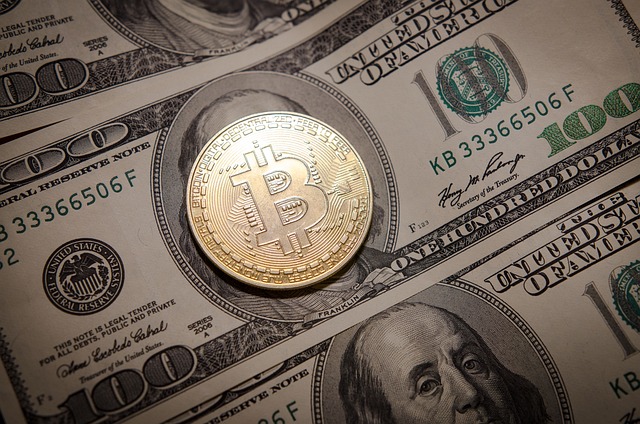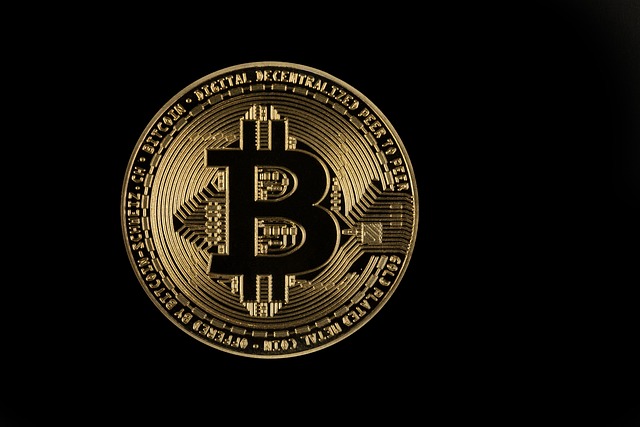By 2025, Bitcoin's security landscape is marked by increasing sophistication in cyber threats, including phishing attacks, malware, and advanced 51% attacks. As institutional adoption grows, personal Bitcoin ownership faces heightened risks. To protect assets, users must implement robust measures like hardware wallets for offline storage, two-factor authentication (2FA), regular software updates, and best practices against phishing. Advanced strategies include diverse backup methods, device encryption, and participation in security forums. Bolstering privacy through mix networks enhances confidentiality, ensuring Bitcoin's anonymity features. Overall, proactive security practices are crucial to safeguard Bitcoin investments in this evolving digital ecosystem.
In 2025, as Bitcoin continues to gain mainstream adoption, understanding its security threats is paramount. This article explores the best practices for safeguarding your digital assets, covering everything from mitigating evolving security threats to leveraging advanced authentication methods and backup strategies. Discover how two-factor authentication (2FA), secure backups, and privacy measures can fortify your Bitcoin wallet against cybercriminals. For serious investors, learn about advanced security steps that go beyond basic protection.
- Understanding Bitcoin Security Threats in 2025
- Best Practices for Securing Your Bitcoin Wallet
- The Role of Two-Factor Authentication (2FA)
- Secure Backup and Recovery Strategies
- Privacy and Anonymity: Protecting Your Transactions
- Advanced Security Measures for Serious Investors
Understanding Bitcoin Security Threats in 2025

In 2025, Bitcoin’s security landscape has evolved significantly from its early days as a decentralized digital currency. While the blockchain technology offers unparalleled transparency and security, users still face numerous threats designed to compromise their digital wallets and holdings. Understanding these threats is crucial for any Bitcoin owner looking to protect their hard-earned crypto assets. Common risks include sophisticated phishing attacks that target naive users, malware designed to steal private keys, and sophisticated 51% attacks where bad actors gain control of a majority of the network’s mining power.
Additionally, the growing popularity of Bitcoin has attracted the attention of organized cybercrime groups who employ advanced techniques like ransomware and social engineering to breach security measures. As more institutions adopt Bitcoin, these threats are likely to become more sophisticated and targeted. Therefore, users must stay vigilant, utilize robust security software, enable two-factor authentication, and follow best practices for securing their digital wallets to safeguard their Bitcoin in this evolving threat environment.
Best Practices for Securing Your Bitcoin Wallet

Securing your Bitcoin wallet is paramount in today’s digital landscape. One of the primary best practices is to utilize hardware wallets, which offer an offline storage solution, making them highly resistant to hacking attempts. These physical devices keep your private keys safe from malicious software or unauthorized access. Additionally, enabling two-factor authentication (2FA) adds a critical layer of protection for your Bitcoin wallet. This involves using a unique code generated by an app or sent via SMS, requiring both your password and this dynamic code to gain access.
Regular updates are another crucial step in securing your Bitcoin assets. Keep your wallet software up to date to benefit from the latest security patches and bug fixes. Furthermore, be mindful of phishing attempts, where cybercriminals impersonate legitimate sources to trick you into revealing private keys or downloading malicious software. Always verify the authenticity of any requests for sensitive information, especially when dealing with cryptocurrency transactions.
The Role of Two-Factor Authentication (2FA)

In today’s digital landscape, securing your Bitcoin is paramount. One of the most effective tools in a crypto user’s arsenal is Two-Factor Authentication (2FA). Beyond simply requiring a password, 2FA adds an extra layer of protection by demanding a second form of verification before granting access to your wallet or transactions. This could be a code sent to your smartphone via an authenticator app or a physical security key.
Implementing 2FA significantly reduces the risk of unauthorized access to your Bitcoin, even if your password is compromised. It’s a crucial step in safeguarding your digital assets and ensuring that only you can control and manage your hard-earned Bitcoin.
Secure Backup and Recovery Strategies

In today’s digital landscape, securing your Bitcoin is paramount. One of the most crucial aspects of this security is implementing robust backup and recovery strategies. Just as you would safeguard physical assets with a safety deposit box, your digital currencies require similar precautions. Regularly backing up your Bitcoin not only ensures that you can recover your funds in the event of a device failure or loss but also offers peace of mind knowing your investment is protected.
Consider using multiple backup methods, such as offline storage devices like hard drives and secure cloud solutions designed for cryptocurrency. Each method should be encrypted to prevent unauthorized access. Additionally, diversifying your recovery options makes it easier to restore your Bitcoin if one backup method fails or becomes compromised. Remember, a secure backup system is an integral part of any comprehensive Bitcoin security strategy.
Privacy and Anonymity: Protecting Your Transactions

Privacy and anonymity are crucial aspects of Bitcoin ownership, offering users a level of financial freedom unique to this digital currency. When conducting transactions, Bitcoin allows for secure and pseudonymous interactions, shielding users from traditional tracking methods employed by centralized banking systems. This privacy feature is achieved through advanced cryptographic techniques that obscure transaction details, ensuring your financial activities remain confidential.
To maximize privacy, consider utilizing tools like mix networks or coin mixing services, which further obfuscate the origin and destination of your Bitcoin. By adopting these measures, you enhance the security and anonymity of your digital assets, making it significantly harder for unauthorized individuals to trace or monitor your transactions in 2025.
Advanced Security Measures for Serious Investors

For serious Bitcoin investors, implementing robust security measures is paramount. Beyond basic password protection and two-factor authentication (2FA), consider employing hardware wallets for offline storage. These physical devices isolate your private keys from potential online threats, significantly enhancing security. Additionally, utilizing secure communication channels and keeping software up to date ensures that malicious actors cannot exploit known vulnerabilities in the ecosystem.
Advanced practices include enabling encryption on all devices, regularly auditing transaction history for unusual activity, and participating in security forums to stay informed about emerging risks. Backup strategies are also critical; store backups in multiple secure locations, both physically and digitally. By adopting these stringent measures, Bitcoin owners can safeguard their digital assets against a landscape of evolving cyber threats.
In 2025, securing your Bitcoin involves a multifaceted approach. By understanding common threats, implementing robust practices like two-factor authentication, and adopting advanced security measures, you can protect your digital assets effectively. Regular backups, privacy enhancements, and informed decision-making are key to navigating the evolving landscape of Bitcoin security. Remember, in the world of cryptocurrency, staying ahead of potential risks is as crucial as embracing innovation.
